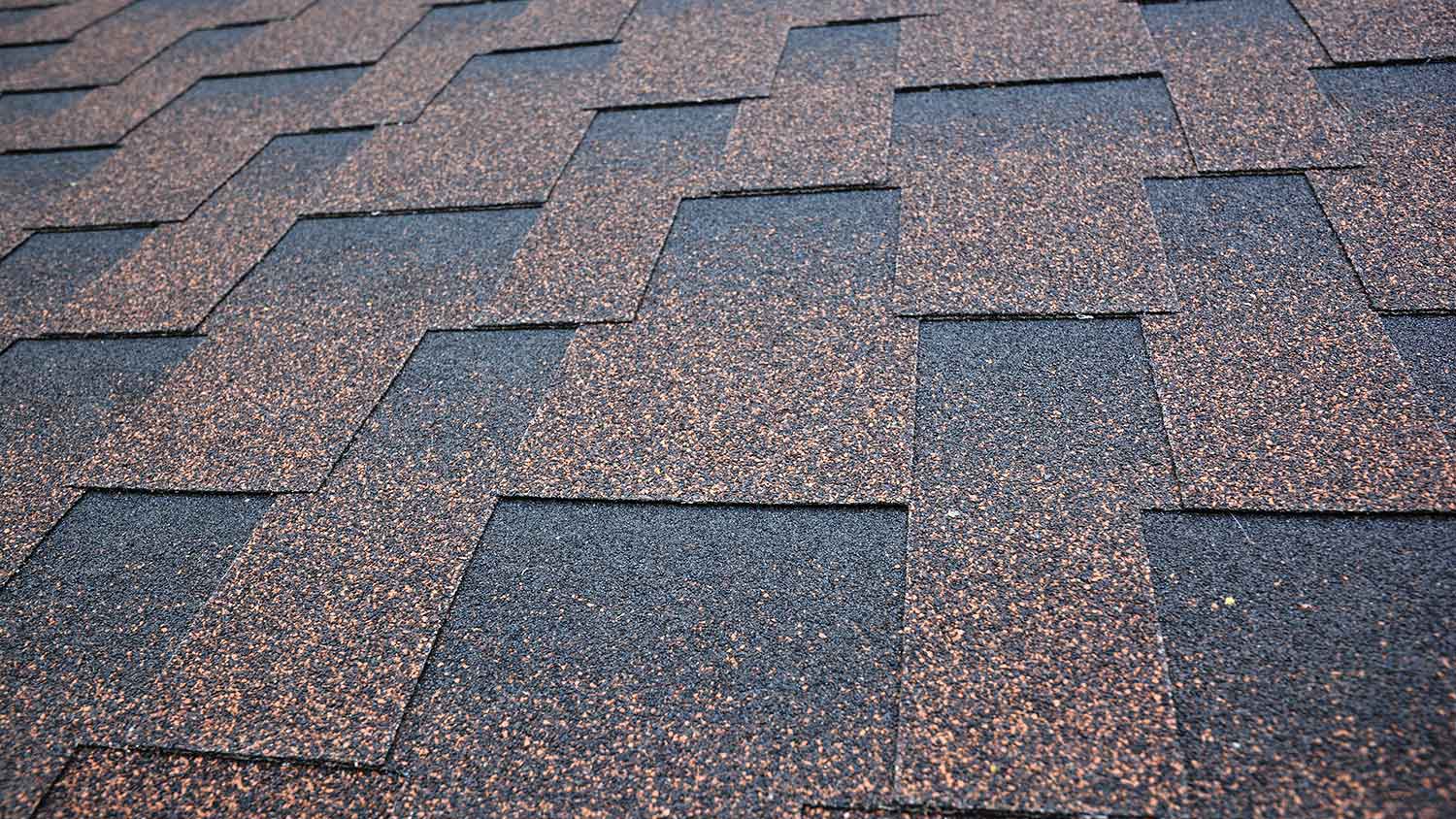What Does Shingle Granule Loss Mean for Your Roof?
It’s important to keep your shingles shipshape


Ever wonder why your asphalt roof shingles have a gritty surface? Shingle granules help protect your home from the elements, and when shingles start to lose those granules, your home is more susceptible to damage. Learn more about shingle granules and what granule loss means for your roof.
What Are Shingle Granules?
Shingle granules make up the top layer of asphalt shingles and give the shingles their texture. Granules are made from crushed stone or other minerals embedded into the asphalt. Shingle granules have a number of functions, including:
UV and heat protection
Water resistance
Algae prevention
Fire resistance
Non-slip texture for installation and repairs
What Causes Granule Loss?
Over time, shingles lose their granules. Weather factors like extreme heat, prolonged exposure to UV rays, roof hail damage, wind damage to roof shingles, and heavy or sustained rain can cause the granules to deteriorate and wear away or fall off the shingles. Granule loss can also be caused by foot traffic from roof repairs or other work involving roof access, debris impact or friction, pressure washing, and improper installation.
Granule loss is expected over the life of asphalt shingles, but it’s important to know when there’s enough loss to cause serious and potentially costly problems.
Effects of Granule Loss

Because shingle granules provide significant UV protection, once the shingles experience granule loss, they’re more susceptible to damage from the sun. UV exposure on unprotected shingles can lead to cracking, splitting, and curling shingles, and with this kind of damage, your asphalt shingles will last a much shorter time than expected.
Granule loss also reduces your roof’s ability to repel water. Without the outer layer of protection from rain and snow, water can enter your roof, leading to leaks, mold growth, and structural damage to roofing components. Over time, shingles with granule loss can cause your roof to quickly deteriorate, which may make a full roof replacement necessary sooner than you’d planned.
How to Identify Granule Loss
To identify granule loss, look for shingles with “blad spots” or areas that appear flat when compared to the texture of other shingles. Take extra care to look low on the roof near your gutters and downspouts. Shingles that appear to be a different color from surrounding shingles can also be a sign of granule loss, as granules help give shingles their color.
After a storm, check for signs of roof storm damage or wind damage to your roof—granule loss can happen as a result of severe weather, so you may be able to spot it then. A professional inspection from a local roof repair company can also identify granule loss as well as any other roof problems that might need to be addressed.
How to Tell It’s Time for Shingle Replacement
So when is it time to budget for the cost of roof shingle repair or replacement? If granule loss is only present in a few places and your roof is in good shape otherwise, you might only need to replace the damaged shingles. More widespread granule loss on a roof that’s nearing the end of its life span may have you spending more than just roof repair cost—it might be time for a full roof replacement.
Consult with a pro who fixes roofs to assess your roof’s condition and advise you about shingle or roof replacement. Your roof protects your biggest investment, so you want to make sure it’s in the best possible condition.
Frequently Asked Questions
You cannot replace granules that have been lost off shingles. The granule embedding process is part of shingle manufacturing, and once the bond holding the granules to the shingles has been lost, the granules are gone for good. Shingles with granule loss must be fully replaced to continue offering adequate protection.
Shingle granules can be cleaned out of gutters using a small scoop or a hose, depending on the quantity of granules and how much other debris is in your gutters. First, clear your gutters of leaves and other debris. This may remove granules in the gutters if they are mixed in with the debris. Use a plastic scoop to remove larger quantities of granules or a hose with a high-powered nozzle for smaller amounts, and collect and dispose of the granules once they’ve been removed.





- Roofers
- Metal Roofing
- Roof Repair
- Roof Inspection
- Vinyl Siding Repair Contractors
- Flat Roofing Companies
- Commercial Roofing
- Emergency Roofing Companies
- Leaky Roof Repair
- Metal Roof Repair
- Business Roof Repair
- Flat Roof Repair
- Tile Roof Repair
- Slate Roofers
- Rubber Roofers
- Roofing & Siding
- Metal Roof Installation
- Affordable Roofing
- Roof Sealing
- Attic Ventilation Contractors
- 15 Common Roof Issues You Shouldn’t Ignore and How They’re Fixed
- Can You Paint Roof Shingles? What to Know About Painting Asphalt Shingles
- What to Do If You’ve Had Wind Damage to Your Roof
- Learn the Pros and Cons of Asphalt Shingle Roofing
- How Much Hail Damage Do You Need to Replace a Roof?
- How to Identify Wind Damage on Roof Shingles
- 30 Common Roofing Mistakes You Need to Know
- How Much Does a Bundle of Shingles Weigh?
- Are Impact-Resistant Shingles Worth It?
- 12 Best Roof Maintenance Tips Every Homeowner Should Know










